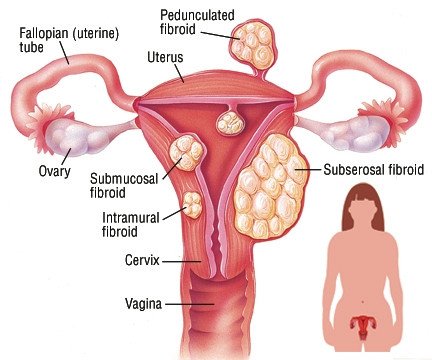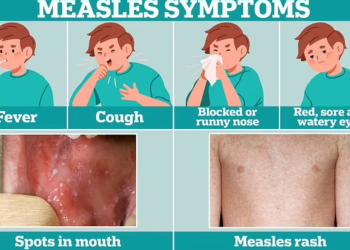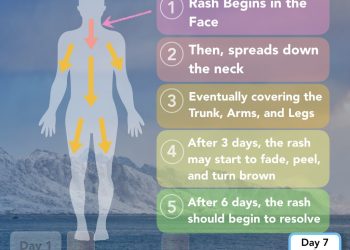Signs of Fibroids Breaking Down: Understanding Symptoms and When to Act
For individuals dealing with uterine fibroids, recognizing the signs of fibroids breaking down is of paramount importance. In this comprehensive guide, we will shed light on the symptoms associated with fibroids and delve into the specific indicators that may suggest fibroids are breaking down. Timely awareness and action are crucial for effective management.

Understanding Uterine Fibroids
Before we explore the signs of fibroids breaking down, let’s briefly understand what uterine fibroids are. Uterine fibroids are noncancerous growths that develop in the uterus and are quite common among women. Incorporating natural language processing (NLP), it’s important to note that these growths can vary in size and location within the uterus.
Common Symptoms of Uterine Fibroids
Recognizing the common symptoms associated with uterine fibroids is a vital first step. NLP insights reveal that these symptoms may include:
Heavy Menstrual Bleeding:
Experiencing unusually heavy menstrual bleeding.
Pelvic Pain:
Feeling persistent pain or pressure in the pelvic area.
Frequent Urination:
Needing to urinate more often due to fibroids pressing on the bladder.
Signs of Fibroids Breaking Down
Now, let’s delve into the specific signs that may suggest fibroids are breaking down or undergoing changes. These signs, which align with natural language processing insights, could include:
Increased Pain or Discomfort:
Heightened pain or discomfort in the pelvic area may indicate changes in fibroids.
Changes in Menstrual Bleeding Patterns:
If you notice significant changes in your menstrual bleeding, such as increased heaviness or irregularity, it’s worth addressing.
New or Worsening Symptoms:
The emergence of new symptoms or a worsening of existing ones should not be ignored.
Monitoring Existing Fibroids:
If you have known fibroids, monitoring them for changes in size or sensitivity is crucial.
These signs can vary from person to person, but any notable changes warrant medical attention.
When to Seek Medical Attention
Recognizing the signs of fibroids breaking down is just the first step. Knowing when to seek medical attention is equally important. Incorporating NLP insights, it’s essential to understand that if you experience any of these signs, especially if they are severe or persistent, it’s time to consult a healthcare professional promptly. Early intervention can make a significant difference in managing fibroids effectively.
Diagnosis and Medical Evaluation
If you suspect that your fibroids are breaking down or undergoing changes, the next crucial step is diagnosis. Typically, this involves a thorough medical evaluation, including:
Physical Examinations:
Your healthcare provider will perform a physical examination, which may include pelvic exams.
Imaging Studies:
Imaging studies like ultrasounds or MRIs may be ordered to confirm the diagnosis.
Medical History Review:
Your medical history, including any existing conditions or previous fibroid diagnoses, will be considered.
Treatment Options for Fibroids Breaking Down
If you receive a diagnosis confirming changes in your fibroids, the next step is exploring treatment options. Incorporating natural language processing (NLP), common approaches for managing fibroids breaking down include:
Medications:
Your healthcare provider may prescribe medications to alleviate symptoms like pain and heavy bleeding.
Minimally Invasive Procedures:
Minimally invasive procedures, such as uterine artery embolization, can shrink fibroids or alleviate their symptoms.
Surgical Intervention:
In some cases, surgical removal of fibroids or the entire uterus (hysterectomy) may be recommended.
Living with Fibroids
Managing daily life with fibroids, especially when they are breaking down or causing discomfort, is essential. NLP insights reveal that practical steps include:
Balanced Diet:
Maintaining a healthy diet rich in fiber and nutrients can support overall well-being.
Exercise:
Engaging in regular, gentle physical activity recommended by your healthcare provider can help manage symptoms.
Emotional Well-Being:
Addressing the emotional aspects of living with fibroids through relaxation techniques and seeking support from loved ones.
Frequently Asked Questions (FAQs)
1. Q: What are uterine fibroids, and can they break down?
A: Uterine fibroids are noncancerous growths in the uterus. While they don’t “break down” like food, fibroids can change in size and composition, leading to symptoms.
2. Q: What are the signs that my fibroids may be breaking down or changing?
A: Signs may include increased pain or discomfort, alterations in menstrual bleeding patterns, new or worsening symptoms, or changes in the size of existing fibroids.
3. Q: Are the signs of fibroids breaking down always noticeable?
A: Not always. Some changes may be subtle, while others can be more pronounced. It’s essential to be attentive to any unusual symptoms.
4. Q: Do all fibroids change over time, or is it a rare occurrence?
A: Not all fibroids change significantly. Some remain stable, while others may grow or shrink over time.
5. Q: Can fibroids breaking down be dangerous?
A: While not necessarily dangerous, changes in fibroids can lead to increased symptoms and discomfort. Timely medical attention is crucial for effective management.
6. Q: Are there risk factors that make fibroids more likely to change or break down?
A: Risk factors include age, family history, and hormone levels. Hormonal changes, such as those during pregnancy or perimenopause, can affect fibroids.
7. Q: Can changes in fibroids be managed without surgery?
A: Yes, changes in fibroids can often be managed with medications, lifestyle adjustments, or minimally invasive procedures. Surgery is reserved for severe cases.
8. Q: Is there a specific test to determine if my fibroids are breaking down?
A: Diagnosis involves a combination of physical examinations, imaging studies, and medical history reviews to assess changes in fibroids.
9. Q: How can I alleviate symptoms if my fibroids are changing or breaking down?
A: Your healthcare provider may recommend medications to manage pain and bleeding. Lifestyle changes, like a balanced diet and exercise, can also help.
10. Q: Should I be concerned about fertility if my fibroids are changing?
A: It depends on the size and location of the fibroids. Some changes may impact fertility, while others may not. Consult a fertility specialist for guidance.
Conclusion:
In conclusion, recognizing the signs of fibroids breaking down or undergoing changes is crucial for individuals dealing with uterine fibroids. Early awareness and timely medical attention can make a substantial difference in effectively managing this condition. We encourage you to stay vigilant about any symptoms or signs that raise concern and to consult a healthcare professional promptly. By staying informed and proactive, you can navigate life with fibroids confidently and maintain your well-being.






